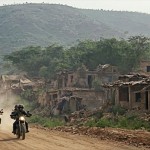The Democratic Republic of Congo (DRC) is facing its largest recorded outbreak of mpox disease, with tens of thousands of infections reported as of June. In December 2022, the government declared it an epidemic.
Formerly known as monkeypox, mpox disease is caused by the monkeypox virus and is typically transmitted from animals to humans, known as a zoonotic disease.
The virus is endemic to the densely forested regions of Central and West Africa and is genetically related to the smallpox virus, which has been eradicated. In severe cases, mpox disease can be fatal, with primary symptoms including a fever and a widespread itchy rash. Vaccination can effectively mitigate its spread.
While mpox outbreaks are not uncommon in the DRC, health experts have identified a new strain of the virus in a specific region of the country this time.
Key points about the outbreak include:
- The epidemic began in May 2022 in the eastern Kwango province but has since spread to 22 out of the DRC's 26 provinces, including the capital, Kinshasa.
- Most transmissions are concentrated in the east, notably in Kamituga, a mining town in the eastern South Kivu province, where a new strain of the virus has been detected.
- As of 2023, over 21,000 cases and more than 1,000 deaths have been reported, with children under five accounting for 39% of infections and 62% of fatalities.
This outbreak has brought attention to the existence of multiple variants (clades) of the mpox virus, with clade 1 being particularly severe and responsible for the current outbreak in the DRC. Unlike historical outbreaks primarily spread through direct contact, this variant is predominantly transmitted through sexual contact, posing new challenges for containment efforts.
The region's ongoing conflicts and limited healthcare resources further complicate efforts to track, treat, and prevent the spread of the disease. International assistance, including vaccines and treatment supplies, remains crucial, as does heightened public awareness and regional cooperation to prevent further spread beyond the DRC's borders.








